Descending Order
Descending order is a way of arranging numbers from the largest to the smallest. When numbers are listed in descending order, they go from highest to lowest.
Example:
If we have the numbers 8, 3, 10, and 5, arranging them in descending order would give us 10, 8, 5, 3.
Steps to Arrange Numbers in Descending Order:
- Write down the list of numbers that you want to arrange in descending order.
- Compare the numbers and identify the largest number in the list.
- Write down the largest number first.
- Continue the process by identifying the next largest number and writing it down.
- Repeat the process until all the numbers are arranged in descending order.
Practice Questions:
Arrange the following numbers in descending order: 17, 5, 12, 8, 20.
Solution:
The numbers in descending order are 20, 17, 12, 8, 5.
Key Points to Remember:
- Descending order arranges numbers from the largest to the smallest.
- It is helpful when comparing numbers or ranking items.
- Practice is important to become proficient in arranging numbers in descending order.
◂Math Worksheets and Study Guides Fifth Grade. Order of Operations
Study Guide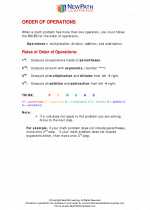 Order of Operations
Order of Operations  Activity Lesson
Activity Lesson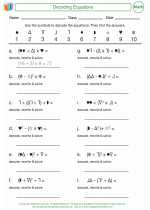 Decoding Equations
Decoding Equations  Worksheet/Answer key
Worksheet/Answer key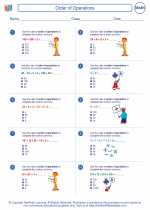 Order of Operations
Order of Operations  Worksheet/Answer key
Worksheet/Answer key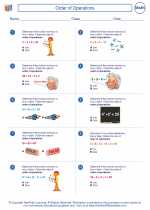 Order of Operations
Order of Operations  Worksheet/Answer key
Worksheet/Answer key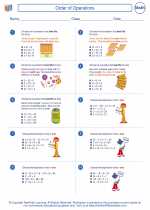 Order of Operations
Order of Operations  Worksheet/Answer key
Worksheet/Answer key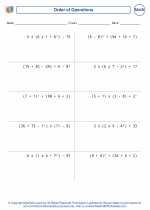 Order Of Operations
Order Of Operations 

 Activity Lesson
Activity Lesson
 Worksheet/Answer key
Worksheet/Answer key
 Worksheet/Answer key
Worksheet/Answer key
 Worksheet/Answer key
Worksheet/Answer key
 Worksheet/Answer key
Worksheet/Answer key

The resources above cover the following skills:
Algebra (NCTM)
Use mathematical models to represent and understand quantitative relationships.
Model problem situations with objects and use representations such as graphs, tables, and equations to draw conclusions.
Connections to the Grade 5 Focal Points (NCTM)
Algebra: Students use patterns, models, and relationships as contexts for writing and solving simple equations and inequalities. They create graphs of simple equations. They explore prime and composite numbers and discover concepts related to the addition and subtraction of fractions as they use factors and multiples, including applications of common factors and common multiples. They develop an understanding of the order of operations and use it for all operations.